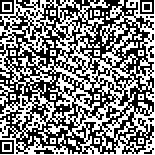| 摘要: |
| [摘要] 目的 观察3D打印技术辅助治疗复杂胫骨平台骨折的临床效果。方法 选2013-07~2016-05期间收治的38例复杂胫骨平台骨折患者为研究对象,所有患者均为新鲜闭合性骨折,Schazker分型为Ⅴ、Ⅵ型。将患者随机分为两组,试验组和对照组各19例。试验组术前使用Mimics软件处理骨折CT扫描数据后打印与实体1∶1大小的胫骨平台骨模型,根据骨模型选择合适的手术入路、复位方法及内固定物。对照组行传统切开复位内固定术。分别记录两组手术时间、术中出血量及术后1年美国特种外科医院膝关节评分(The Hospital for Specical Surgery Knee-ralting Score,HSS)、健康调查简表(The MOS item short from health survey,SF-36)评分。结果 38例患者随访时间均超过1年,手术切口均甲级愈合,骨折愈合时间10~16(14.5±2.1)周。试验组与对照组手术时间分别为(82.4±11.2)min、(126.5±9.1)min;术中出血量分别为(88±39)ml、(302±49)ml,试验组与对照组相比手术时间短,出血量少,差异有统计学意义(P<0.05);试验组与对照组术后1年HSS评分为(91.3±2.8)分、(90.1±3.6)分;SF-36评分(89.1±5.6)分、(90.7±7.8)分,两组对比差异无统计学意义(P>0.05)。结论 3D打印技术辅助治疗复杂胫骨平台骨折可大大缩短手术时间,减少术中出血量,术后膝关节功能恢复好。 |
| 关键词: 3D打印技术 胫骨平台骨折 内固定术 |
| DOI:10.3969/j.issn.1674-3806.2018.05.03 |
| 分类号:R 683.42 |
| 基金项目:广东省自然科学基金项目(编号:2014A030307012) |
|
| Clinical effect of 3D printing technology on treatment of complex tibial plateau fractures |
|
ZHAO Ning, CHEN Jing, ZHONG Hua, et al.
|
|
The Third Department of Orthopedics, the Central People′s Hospital of Zhanjiang City, Guangdong 524000, China
|
| Abstract: |
| [Abstract] Objective To explore the clinical effect of 3D printing technology on treatment of complex tibial plateau fractures.Methods 38 inpatients with complex tibial plateau fractures treated in our hospital between July 2013 and May 2016 were collected as the research subjects. All the patients had fresh and closed fractures(Schazker classification: Ⅴand Ⅵ types) and were randomly divided into two groups. Before surgery, the experimental group used Mimics software to process the fractured CT scan data and printed the 1∶1 size tibial plateau model. According to the bone models, the appropriate surgical approaches, reduction methods and internal fixations were chosen. The control group used the traditional method: open reduction and internal fixation. The operation time, intraoperative bleeding, The Hospital for Specical Surgery Knee-ralting Score(HSS) and The MOS item short from health survey(SF-36) were recorded 1 year after operation.Results The 38 patients were followed up for more than 1 year. All surgical incision wounds healed in grade A. The fracture healing time was 10 to 16 weeks[average (14.5±2.1)weeks]. The operation time was (82.4±11.2)min and (126.5±9.1)min in the experimental group and the control group respectively. The intraoperative bleeding volume was (88±39)ml and(302±49)ml in the experimental group and the control group respectively. Compared with the control group, the experimental group had shorter operation time and less bleeding volume(P <0.05). There were no significant differences between the experimental group and the control group in HSS[(91.3±2.8) vs (90.1±3.6)] and SF-36 scores[(89.1±5.6) vs (90.7±7.8)](P>0.05).Conclusion 3D printing technology can greatly shorten the operation time, reduce the intraoperative bleeding and promote the postoperative knee function recovery in adjuvant treatment for complex tibial plateau fractures. |
| Key words: 3D printing technology Tibial plateau fracture Internal fixation |

